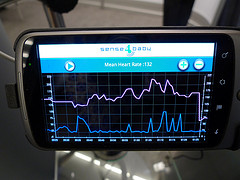Los Angeles County expected to settle $2.8M medical malpractice suit
 |
| Fetal monitoring system display |
Los Angeles County officials are expected to approve a $2.8 million settlement of a medical malpractice suit filed against medical staff at County Harbor-UCLA Medical Center over their failure to perform an emergency cesarean section after signs of distress. The 18-year-old woman, Guadalupe Fernandez, gave birth to a son who was later diagnosed with neurological injuries from fetal distress, according to court records.
Even after a completely normal prenatal course, a fetus may not tolerate the stresses of labor well. The main way that doctors and nurses have of following fetal well-being during labor is the electronic fetal heart monitor. If the fetal heart monitor shows evidence of fetal oxygen deprivation (fetal distress), the first step is try to make the problem go away by changing the mother’s position, giving the mother some oxygen to breathe, and increasing her IV fluids but decreasing or discontinuing any Pitocin that may be running. If these measures are not successful, then a fetus that is showing evidence of distress must be delivered via an emergency Cesarean section as soon as possible in order to prevent permanent brain damage.
Many medical malpractice cases revolve around the claim that the evidence of fetal distress on the monitor tracing was not properly assessed and that the baby sustained permanent brain damage (often cerebral palsy) because of the prolonged oxygen deprivation that resulted from the failure to perform an emergency Cesarean section.
Los Angeles County will also pay a $16,208 Medi-Cal lien issued against the family and waive Fernandez’s bill of $19,455 in addition to covering nearly $52,000 in legal costs, including attorney fees, in the case.
As a result of any settlement, the hospital is required to devise a plan of correction, much of which has already been implemented. Part of the plan involved a comprehensive survey to assess the hospital system’s protocols, along with training and credentialing procedures. According to the county, a further review of the hospital’s treatment history showed complication rates are at or below national benchmarks.
 New York Personal Injury Attorneys Blog
New York Personal Injury Attorneys Blog


